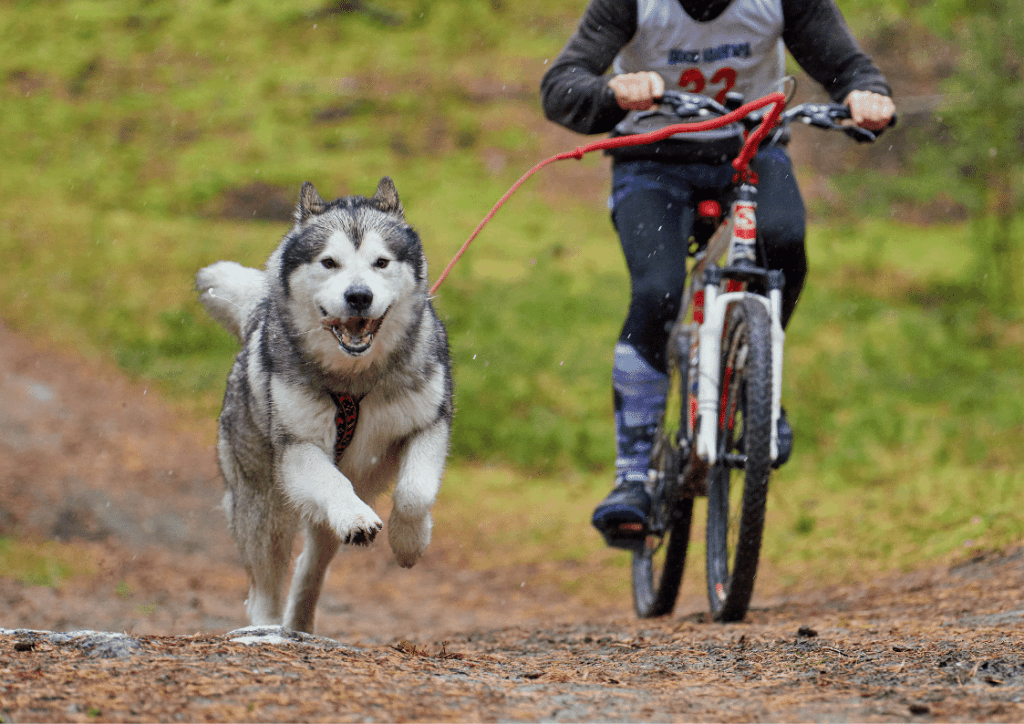It’s only logical to question which breeds would make the ideal candidates for bikejoring competitions. As far as breeds go, this sport has no limitations. Regarding sledding and bikejoring, certain breeds may be more suited than others. The Husky is well-known as a preferred dog for sledding and bikejoring. These dogs know a lot about sledding, are great with other dogs and are a breeze to teach.
It is a breed of large, powerful canines that enjoys running and is capable of long-distance endurance. Pitbulls are another popular kind of dog for bikejoring. Dogs of this breed are strong and eager to learn from their owners. Ensure the Pitbull is comfortable with other people and pets before bringing them home. The Alaskan Malamute, a breed similar to the husky, is also a good choice for bikejoring.
These dogs have a long history of sledding and are strong, clever, and well-bred. Finally, we have the Samoyed, a breed well-suited to Bikejoring since it is a hardy dog that enjoys running at full pace in severe weather. Dogs are used to pulling a bicycle, driven by the dog’s owner or teacher, in the sport of Bikejoring.
The Basics OfBikejoring
The activity entails riding your bike through the woods with your dog attached to the front. Do you think that’s a decent plan? Yes, absolutely! Enjoy the trails with your closest buddy in a wonderful fashion. Isn’t this a recipe for disaster? Yes, absolutely! Bikejoring is not for the faint of heart or those unfamiliar with the sport.
Regarding bikejoring, it doesn’t matter what kind of bike you have. Your neighborhood bicycle shop can do a tuneup. As a result, not only will your bicycle be ready for bikejoring, but it will last you for many more miles on the road. Even if your bike seems to be in perfect working order, a technician will be able to detect problems and provide solutions.
There may be some trial and error when fitting a harness, but this does not always imply that your dog is unusually shaped or that the harness is defective. Trying a new model is all it takes. If you get in touch with an outfitter, they’ll be able to point you on the correct route. You’ll need a bungee cord and line to attach your dog to the bike.
The length of a line is a matter of personal taste. In a nutshell, the ideal length for a line is 8-10 feet. Long enough for the dog to feel comfortable in front of the bike, yet short enough, so it is still simple to control. To prevent the towline from becoming tangled between the wheel and the forks, many bikejorers employ bayonets, antennae, or plastic pipes.
A helmet is also a must-have. A bike helmet that fits properly is essential and far less expensive than a funeral. To ensure proper fit, adjust the straps as necessary. Getting the ideal fit is easy, thanks to adding additional foam padding in many helmets. Helmets designed for other activities should not be used for climbing. A fall from a horse or a skateboard differs significantly from a bike mishap.

